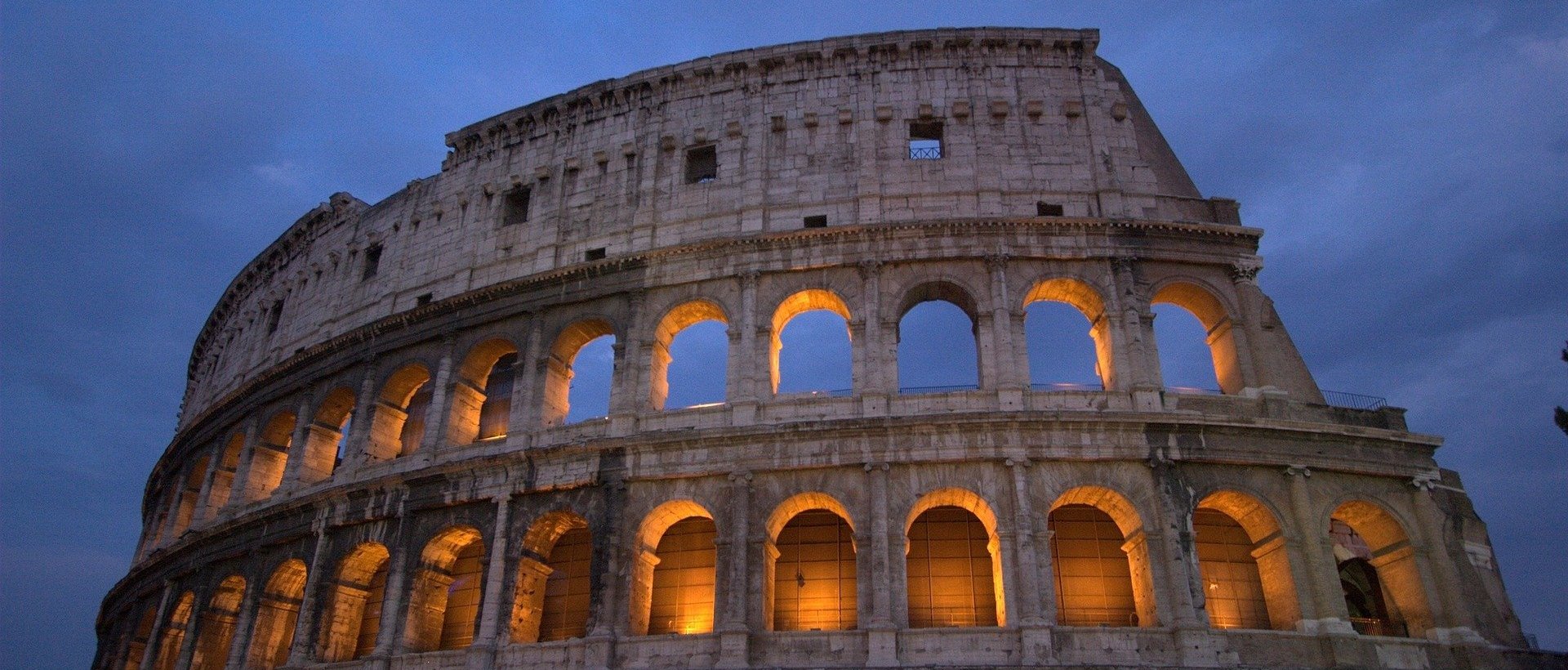Roman Colosseum
Posted on 26th December 2020
The Colosseum or Flavian Amphitheatre as it was known, was commissioned by emperor Vespasian around 70AD. The Emperor and his family and guests would sit in the emperor’s private box.
The Colosseum seated approximately 45,000 people with further standing room and is believed to have held up to 65,000 people in total.
There were specific seating areas within the Colosseum for different ranking citizens. Senators had the best seats, followed by politicians, then ordinary citizens and soldiers, slaves and finally women sat at the top.
Much of the seating was made of marble, then wooden seats for poorer people and standing room for the rest.
Underneath the Colosseum was a labyrinth of tunnels and passages through which the entertainers, fighters and animals would travel. They then entered the arena through trap doors.
The Colosseum was opened by Titus, the son of Vespasian in 80AD with 100 days of games.
These games would include:
Gladiatorial Combats
Wild Animal Fights
Chariot Processions and Races
The gladiators that fought in these battles may have been prisoners of war or slaves. Often criminals condemned to death became gladiators.
The fights would be to the death, and the bloodier the battle the more the crowd cheered. Watching killing was very entertaining in ancient Rome.
As well as gladiators fighting each other, there were also wild animal fights. Many animals were used in these fights, some more dangerous than others.
These included:
Lions
Tigers
Leopards
Bears
Ostrich
Elephants
It was possible for hundreds of animals to be killed in a single day, by Beast Killers (Bestiarii)
There were also chariot processions that would parade through Rome led by slaves blowing trumpets and musicians playing flutes and horns. Some chariots were led by wild animals and there were floats with entertainers, actors and dancers.
There would be chariots led by wild animals and floats with entertainers, actors, dancers.
This procession would enter the Colosseum followed by the gladiators for the start of the games.
Tagged as: Junior Ancient Rome
Share this post:





